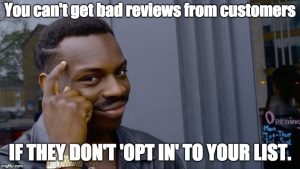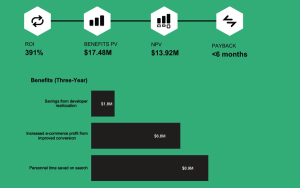Google, Bing, Yahoo, and other search engines use an algorithm to separate good content from bad content. The same algorithm separates good content from great/popular content. Your content is competing with rivals and unrelated companies for the same thing – a reader’s attention. Compete and sway readers to your site using search engine optimization and the tips Google, Bing, and Yahoo crave.
- Length: longer content gets higher rankings than short articles. However, long content must have meaty knowledge. Users rely on articles to solve their conundrums, and longer content satisfies readers while expanding their knowledge with more information. That balance of lengthy word count and relevant knowledge must apply to all written content.
- Optimize for the Right Keywords: All too often, a company has its site optimized for the keywords and phrases it thinks their target audience uses to search, or keywords where it cannot possibly compete against the Internet’s biggest players. But they don’t really know because they didn’t bother to check out what keywords and phrases people actually use when searching for their type of product or service. There are several tools available that will give you a good idea of how many people searched for the keywords you think are hot over the past month. If you find that only 4 people actually used your favorite keyword search term, don’t panic. These tools will also suggest related words and phrases that will give you a higher yield.
- Understanding: complicated subject areas exist in your industry. Explaining that to the average reader proves difficult. Conveying what you know into non-technical language takes skill as not everyone can do this. Back up claims with facts such as examples, statistics, and comparisons.
- Credibility: take facts a step further and provide facts throughout the article. Bold claims in an article such as statistical data need factual evidence as confirmation. Interviews, expert analysis, and citing sources at the footer separate valid articles from false or unproven articles.
- Appearance: looks matter in blogs. If a blog doesn’t look appealing, users flock elsewhere regardless of information provided in the article. Make your blog page look presentable with visuals. Charts, graphs, infographics, and screenshots look good and provide substantial proof to possible claims in the article. Bulleted/numbered lists and headings/subheadings in articles break up the bulky text making it easier for users to skim the article. Finally, use a custom template and change the font/colors/background image/align position. Additionally, make the page mobile-friendly with responsive web design or mobile web pages.
- Variety: give users a choice on how to read your article. Written text, infographics, video, and audio are the choices allotted. If you choose text, you can select from viewing as one/single page, multiple click-through pages, PDF form, and/or a table of contents. Additionally, tag articles with words or phrases so users can filter.
Search engine rankings are pivotal to small businesses, mid-size companies, and large corporations. Competing for online attention derives from content. Never assume anyone in the company can write quality articles and blogs. Trained writers are knowledgeable experts in the field. Other trained writers wrote a lot on the subject. Both know how to convey the words on paper and make readers curious enough to click. In addition, trained writers know how to maintain company ranking with consistent, relevant content. Let us know if you need more information on quality content.
Digital & Social Articles on Business 2 Community(59)
Report Post







